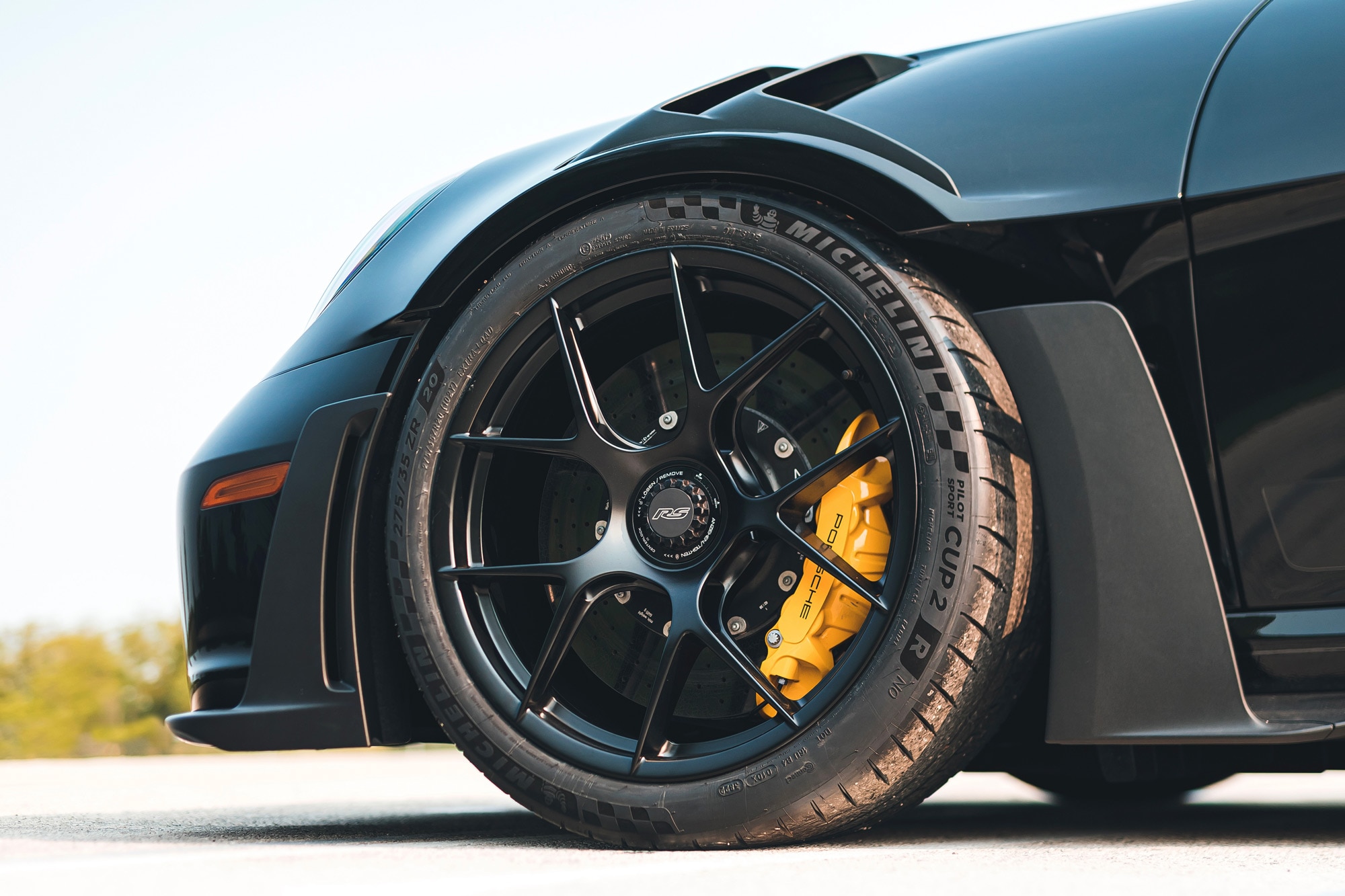What Are Center-Lock Wheels?
Though these wheels are often coveted for their style, they serve a pragmatic purpose that's rooted in the history of car racing.
 Porsche
Porsche
Center-lock wheels are different from the traditional rims you find on most cars, but there's a reason for their distinctiveness: car racing. Traditional wheels typically use four to six lug nuts or bolts to secure them to a vehicle's hub. Center-lock wheels use a larger nut directly in the rim's center. Changing a center-lock wheel takes much less time than a regular wheel because there's only one nut to tighten or loosen, and when seconds separate winners and losers in racing, these wheels make sense.
In addition to an unusual design, center-lock wheels also have an interesting history. Even on street cars there are some advantages to center-lock wheels today — and also some disadvantages.

The History and Evolution of Center-Lock Wheels
Designed for automobile wire wheels, the first versions of center-lock wheels originated in the early 1900s. Instead of removing multiple lug nuts or bolts, center-lock wheels only required tightening or loosening a single "winged" nut, usually with a soft mallet or hammer. This is why they were also known as knock-off wheels.
Automakers embraced the new wheel design, and racers used the center-lock option to shave valuable time while swapping out tires during pit stops. While they have mechanically changed over time, center-lock wheels are currently used in Formula 1, NASCAR, and other racing series.
In the late 1960s, new automobile safety standards banned production-car wheels with winged projections, such as those of the original center-lock designs. The modern hexagonal nut center-lock wheels began to appear in the mid-1980s on supercars such as the Ferrari F40 and Porsche 959.
Today, high-end sports cars used on the track — or those wanting that race car look and feel — also use center-lock wheels. Some examples include the Ferrari LaFerrari and its open-top LaFerrari Aperta. Many top-end Porsches currently opt for this design, including the 918 Spyder, the 911 GT2, and the 911 GT3. Koenigsegg uses them on their hypercars, and Lamborghini has offered them as an upmarket addition to the Huracán and Aventador.
 Porsche
Porsche
The Advantages of Center-Lock Wheels
The primary advantage of center-lock wheels in racing is how fast they can be removed and replaced. Every second can be crucial when racing, as teams will change multiple sets of tires during several pit stops throughout a race. When all is totaled, the time savings can be significant. Other potential advantages — perhaps more relevant to street-car use — include visual or aesthetic reasons, larger disc brakes, and less rotational mass.
 Lamborghini
Lamborghini
Center-Lock Wheels Require Special Tools to Remove
While standard wrenches can open traditional automotive lug nuts or bolts, center-lock wheels require a unique tool. In racing, a center-lock impact wrench is known as a wheel gun. You also use an impact wrench or a long-handled torque wrench for some street cars with center-lock wheels. Others require tools that can be expensive and must be specially ordered.
In addition to requiring specialized tools to remove and replace the single fastener, center nuts require special maintenance and lubrication for optimal performance and longevity.
Written by humans.
Edited by humans.
 Matthew Askari
Matthew AskariMatthew Askari has written for more than 30 leading publications, both in print and online. His topics of expertise include travel, adventure, luxury, design, and especially all things automotive. At 14, he tried making a driver's license test appointment for his 16th birthday and was told by the DMV they only book nine months out. His eventual birthday appointment was a success, and he's since driven in more than 40 countries on five continents. Among the many cars he's owned, his favorites include a first-generation BMW Z4 and Mark IV VW Golf 1.8T. He's always cooking up that next great road trip.
Related articles
View more related articles